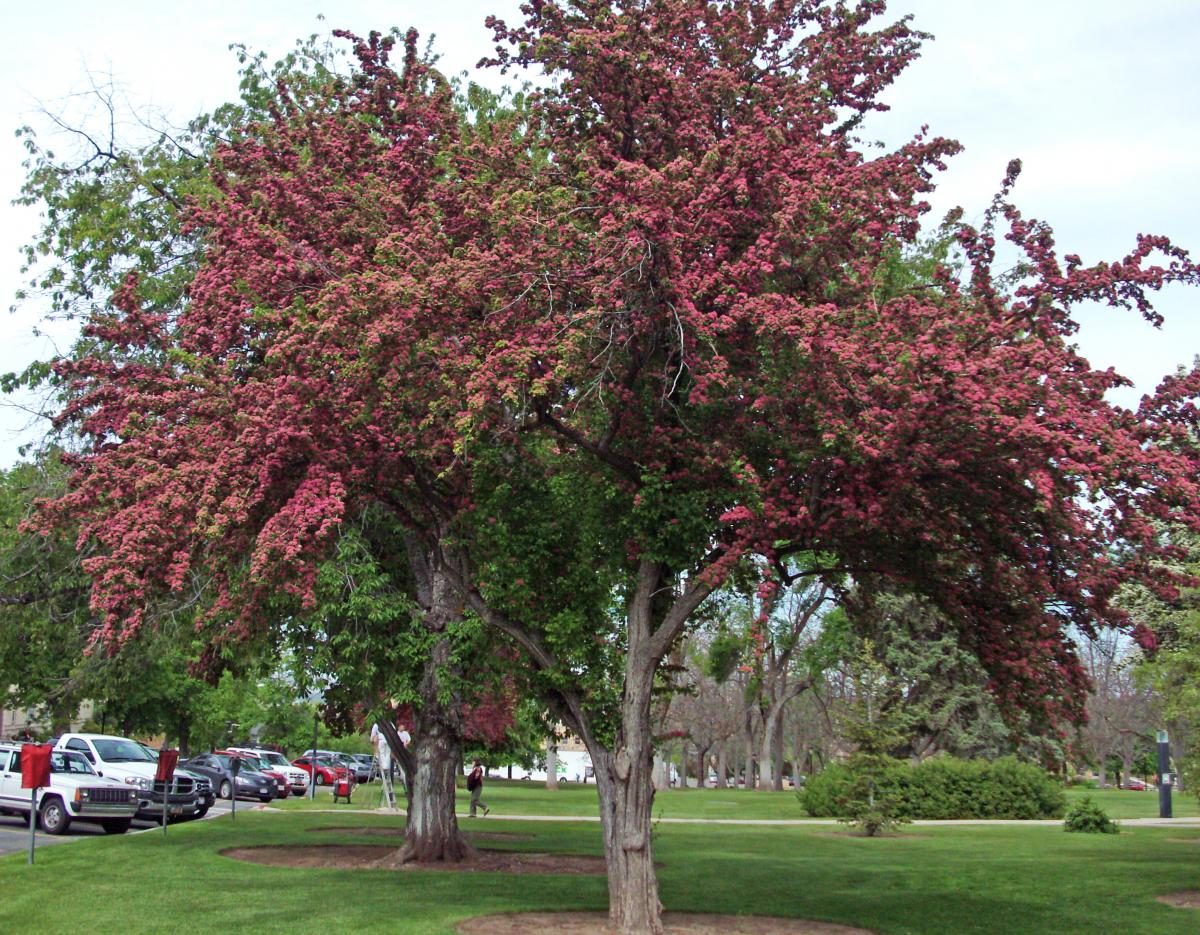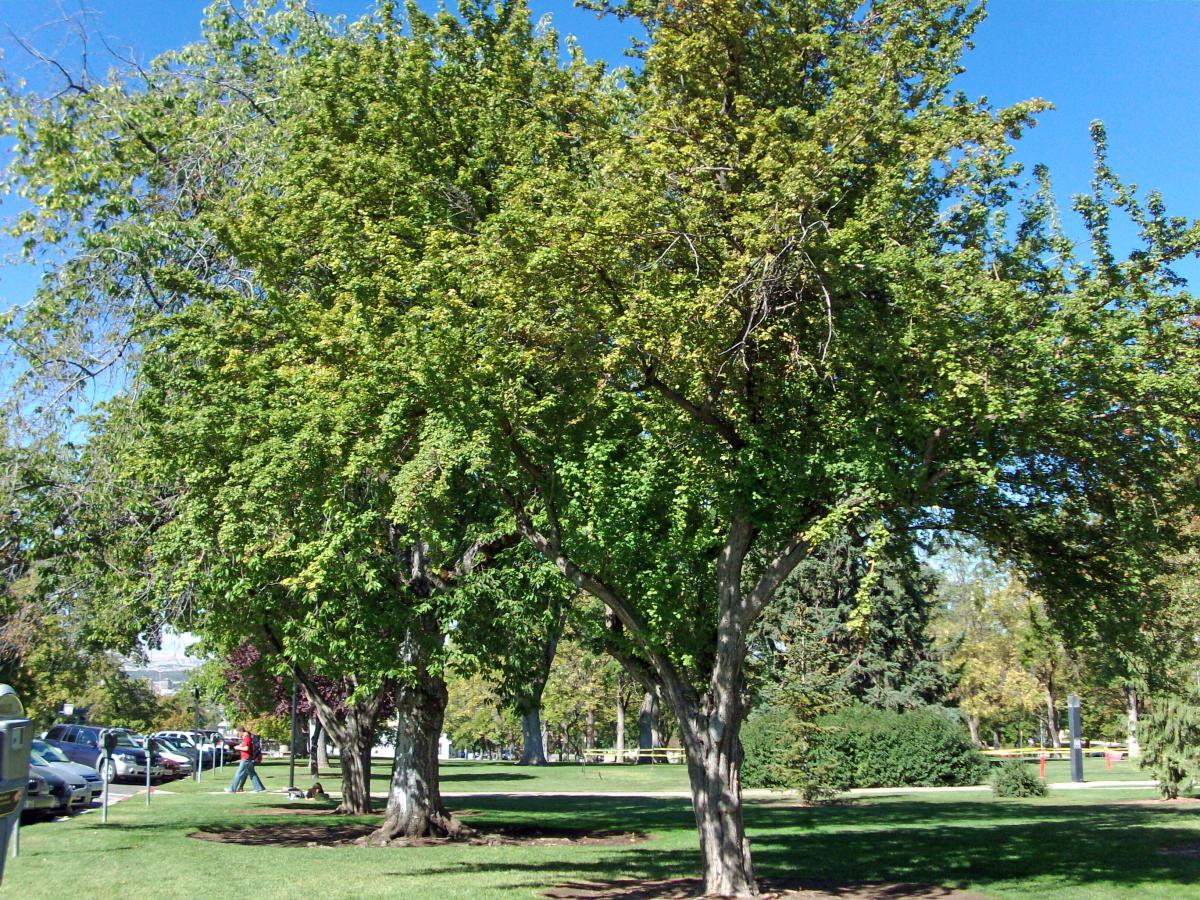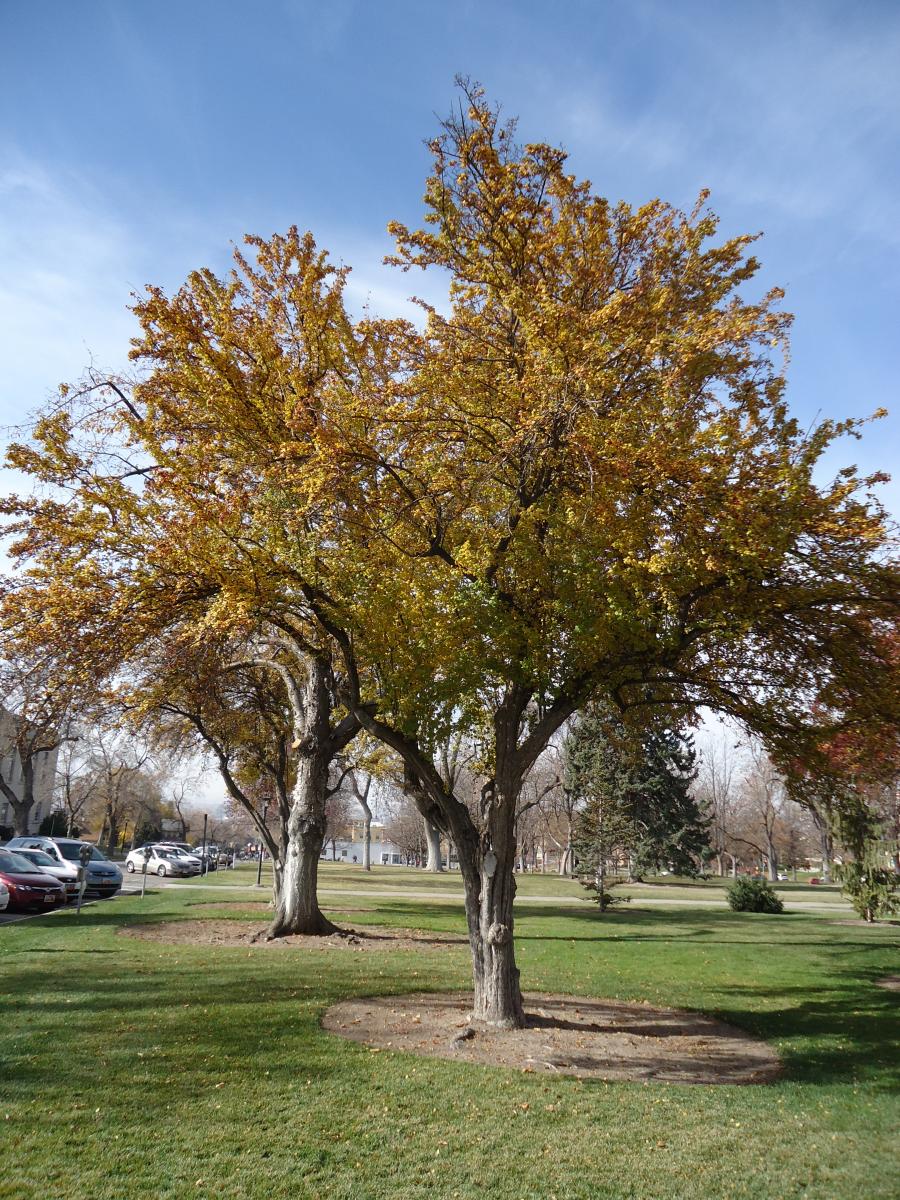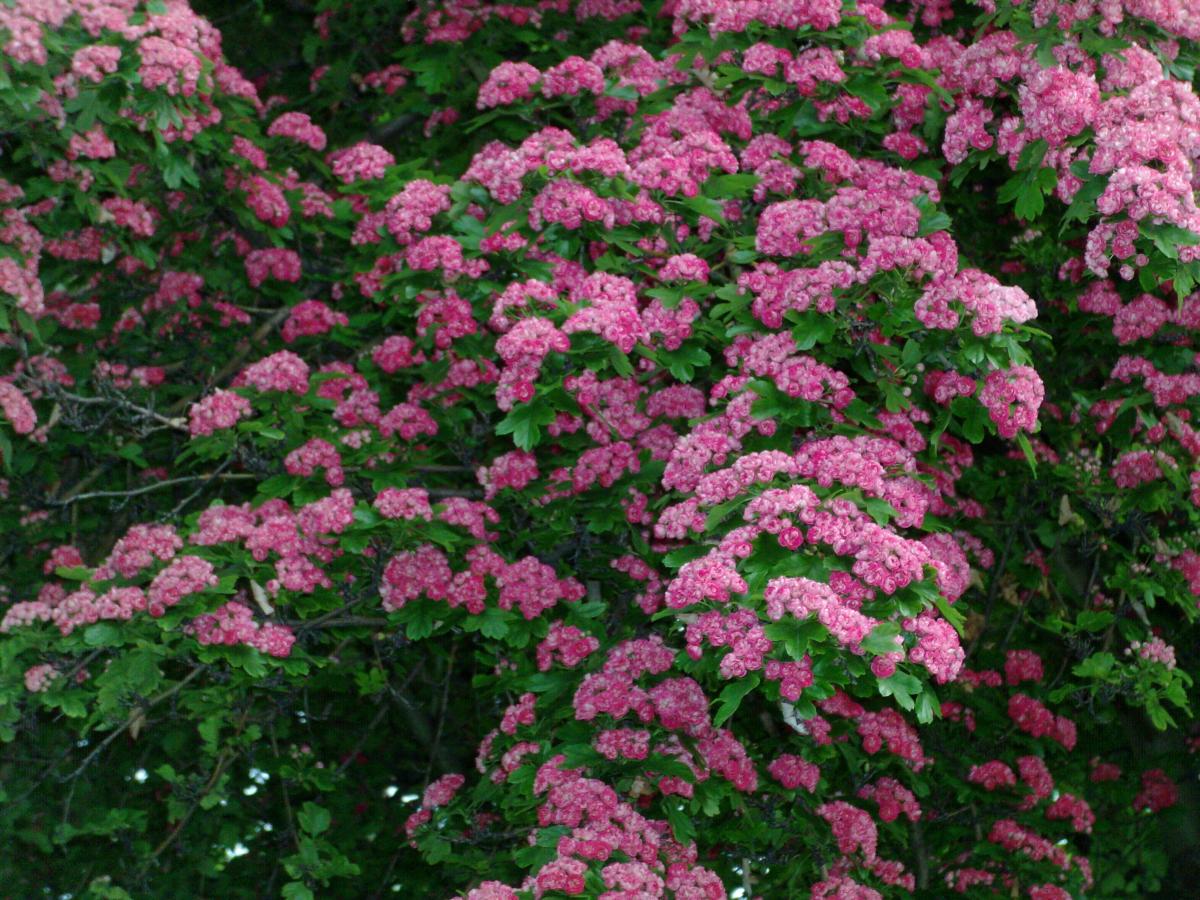English Hawthorn










Crataegus laevigata
Leaves: Deciduous. Leaves are moderate to deeply lobed with 3 to 5 lobes and frequently irregularly lobed. 1 to 2 inches long and ⅔ as wide. Leaves have large teeth and serrated leaf edges. Medium to dark green color. Fall color varies from reds to orange, usually brown.
Bark/Twigs: Trunk looks like a bundle of stems. Trunk is fluted and has interesting, grey-brown peeling bark. 1 inch long thorns periodically appear on small twigs, but fall off of larger branches.
Flowers/Fruit: Flowers are red to pale pink, sometimes white, in small 1 to 2 inch clusters. Flowers are ¼ inch in diameter and have five petals. Blooms late spring to early summer (May to June). Red to orange, pea-sized fruits persist through the winter and attract birds.
Mature size and shape: Medium small. 15 to 25 feet high by ⅔ as wide. Rounded to spreading shape.
General information/special features: Plant in full sun to partial shade. Moist, well-drained soil is best. Does fairly well in somewhat drier conditions and can be drought tolerant after established.
Landscape use and maintenance: Makes a nice tree for smaller areas. This small, pollution tolerant tree is a good choice for the urban landscape. Average growing rate. Average maintenance.
USDA Hardiness Zone: 4 to 8
Family/Origin: Rosaceae – Rose. Native to Europe and northern Africa. Also called C. oxyacantha.
Campus Use: Somewhat common. Can be found in President's Circle or south of the Park Building (Bld 1).
